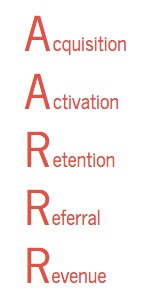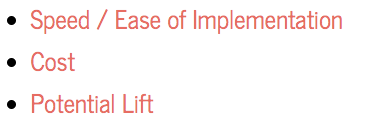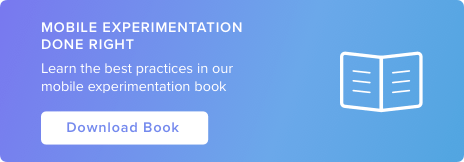5 Experimentation Ideas That Help Move the Meter

It’s not enough to just pick an A/B testing tool. Whether it’s 3rd party or in-house, you need to have a process and a plan of coming up with a steady pipeline of meaningful ideas that will help move the meter for your product and, of course, a team that can help execute against it.
1. Have a Good Understanding of Standard Design Patterns
It takes time, exposure, and discipline to develop a good taste of what works and what doesn’t when it comes to mobile and web products. As it stands, there are a few resources out there that can give you a sense of what other companies are doing, whether it’s for onboarding or other screens.
Here are a few that we‘d recommend:
2. Good Artists Copy, Great Artists Steal
You’re in product or marketing and you are exposed to brilliant apps all the time. With industry-leading apps in your vertical, it’s always a good idea to take note of the design patterns they employ.
Even for apps outside of your industry, if you found an app experience to be delightful and effective, keep note of it! Outside of keeping a mental note, it might be a good idea to have folders of interface screenshots that make sense for certain parts of your app.

You want a stream of both qualified and diverse ideas to collaborate from in order to properly assess experiment ideas.
3. Check Out Online Resources
This is to ensure that you’re not operating in an echo chamber. You’ll have some of the best folks in the industry who can give you their feedback on ideas. Great websites to visit are:
This is an engaged community of marketers, product managers, and growth hackers who share content, collaborate on ideas, and give you honest feedback on your questions.
From Jakub Linowski, a CRO veteran based in Toronto, this site has a plethora of A/B tests backed with real data that they publish regularly. It’s a good place to draw inspiration from and learn about methodology.
A community that was originally dubbed as the “Hacker News for Marketers,” Inbound.org is a resource created by inbound marketers for inbound marketers. They cover everything from A/B testing to SEO, and then some.
A resource that has grown more useful over time, UserOnboard profiles top companies and tears down their onboarding flows. Whether it’s web or mobile, you’ll definitely want to pay attention to their analyses and perhaps draw some inspiration to think about how you can approach onboarding a bit differently.
In person meetups
Finally, if you’re looking for something a little more focused and in person, check out Meetup.com for local growth meetups to start building relationships with colleagues in your industry.
4. Focus On The Major Levers of Your App
You’ll want to run your experiments in the key parts of your app such as onboarding, pricing pages, checkout flows, or upsell pages, as the majority of your users will be exposed to those elements at some point.
From there, the other areas and metrics you should focus on come straight from Dave McClure’s now famous Pirate Metrics (Activation-Acquisition-Retention-Referral-Revenue).

Anything that touches upon those metrics is a great candidate for an experiment.
5. Have a prioritization framework
Here at Taplytics we’ve taken a page from other optimization resources and come up with a framework centered around mobile that comes down to 3 things:

For each of those 3 areas, you should have a scoring system for your ideas. As an example, each stakeholder on your team can be given a certain number of points. Senior team members (eg. Head of Mobile Product) would be given the most points, say 5, versus everyone else’s 3 points. This ensures that the general direction of the product is still on track versus individual features getting priority.
With Taplytics, if it’s something that can easily be shipped and deployed through the Visual Editor within a day, that can be quickly prioritized.
If it’s a test that’s more complex like a code experiment (for new features or onboarding flows etc.), it may require several in-depth discussions with your team.
Once you tally up the scoring points, you can use that as a reference point when heading into product meetings. Make sure to prioritize your backlog with the most promising experiment ideas that can help move the meter for your product!

What are some processes you have in place to generate a steady pipeline of promising experiment ideas? Let us know in the comments!
Taplytics is a fully integrated mobile A/B testing, push notification, and analytics solution providing the tools you need to optimize your mobile app.

